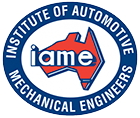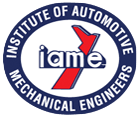2024 Ford Ranger Plug-In:
A Game-Changer with Pro Power Onboard

The automotive industry is constantly evolving, with automakers pushing the boundaries of innovation to cater to the ever-changing needs of consumers. In 2024, Ford is set to launch the highly anticipated Ford Ranger Plug-In Hybrid Electric Vehicle (PHEV), which promises to be a game-changer in the pickup truck segment. One of the most exciting features in this upcoming model is the incorporation of "Pro Power Onboard," a groundbreaking technology that will undoubtedly set a new standard in the industry.
Pro Power Onboard: A Game-Changing Innovation
The Ford Ranger Plug-In Hybrid is not your typical pickup truck. It represents a significant leap forward in the fusion of automotive and electrical technology. Pro Power Onboard is a cutting-edge feature that will change the way users approach various tasks, whether they are on worksites or remote camping adventures.
Empowering Your Worksite
For professionals who rely on their trucks as mobile offices and workshops, the Pro Power Onboard feature in the 2024 Ford Ranger PHEV is a game-changer. It offers the convenience of powering tools and equipment directly from the vehicle, eliminating the need for bulky and noisy generators. The Ranger PHEV comes equipped with 230-volt, 10-amp outlets in both the bed and the cabin, providing users with ample electrical power for their tools and devices.
Unmatched Versatility
The versatility of the Pro Power Onboard system is truly remarkable. Whether you're at a construction site, helping a friend move, or tackling a home improvement project, you can count on the Ranger PHEV to provide the necessary power. This versatility extends to camping trips and outdoor adventures as well. Imagine having the ability to run your campsite lighting, cook meals, or charge electronic devices right from your pickup truck, all while enjoying the serenity of nature.
Powerful Inverter
What sets the Pro Power Onboard feature in the 2024 Ford Ranger PHEV apart from the competition is its onboard inverter, which is expected to exceed 3kW in capacity. This means that the Ranger PHEV can handle even the most power-hungry equipment and appliances with ease. From heavy-duty power tools to energy-efficient appliances, this pickup truck has you covered.
Sustainable Power
In addition to its impressive power capabilities, the Ranger PHEV's Pro Power Onboard system aligns with Ford's commitment to sustainability. By utilizing electricity stored in its advanced battery system, the vehicle can provide clean and quiet power without the emissions associated with traditional gas-powered generators. This not only reduces the environmental impact but also contributes to a quieter and more pleasant work environment.
User-Friendly Operation
Ford understands the importance of user-friendly features, and Pro Power Onboard is no exception. The system can be easily activated through the vehicle's intuitive touchscreen interface, allowing users to monitor power usage and adjust settings as needed. Whether you're a seasoned professional or a weekend DIY enthusiast, you'll appreciate the simplicity and convenience of this technology.
The 2024 Ford Ranger Plug-In Hybrid Electric Vehicle with Pro Power Onboard is poised to revolutionize the way pickup trucks are used. With the ability to power tools, appliances, and more, it offers unparalleled convenience and versatility for a wide range of applications. This innovative feature not only enhances productivity but also contributes to a cleaner and more sustainable future. As we eagerly await the arrival of this groundbreaking vehicle, it's clear that the 2024 Ford Ranger PHEV is destined to set a new standard in the automotive industry.








